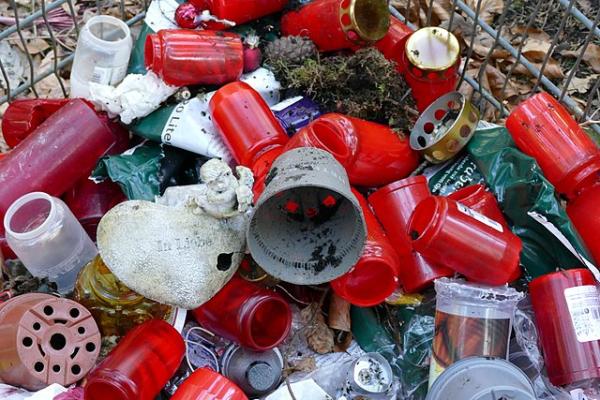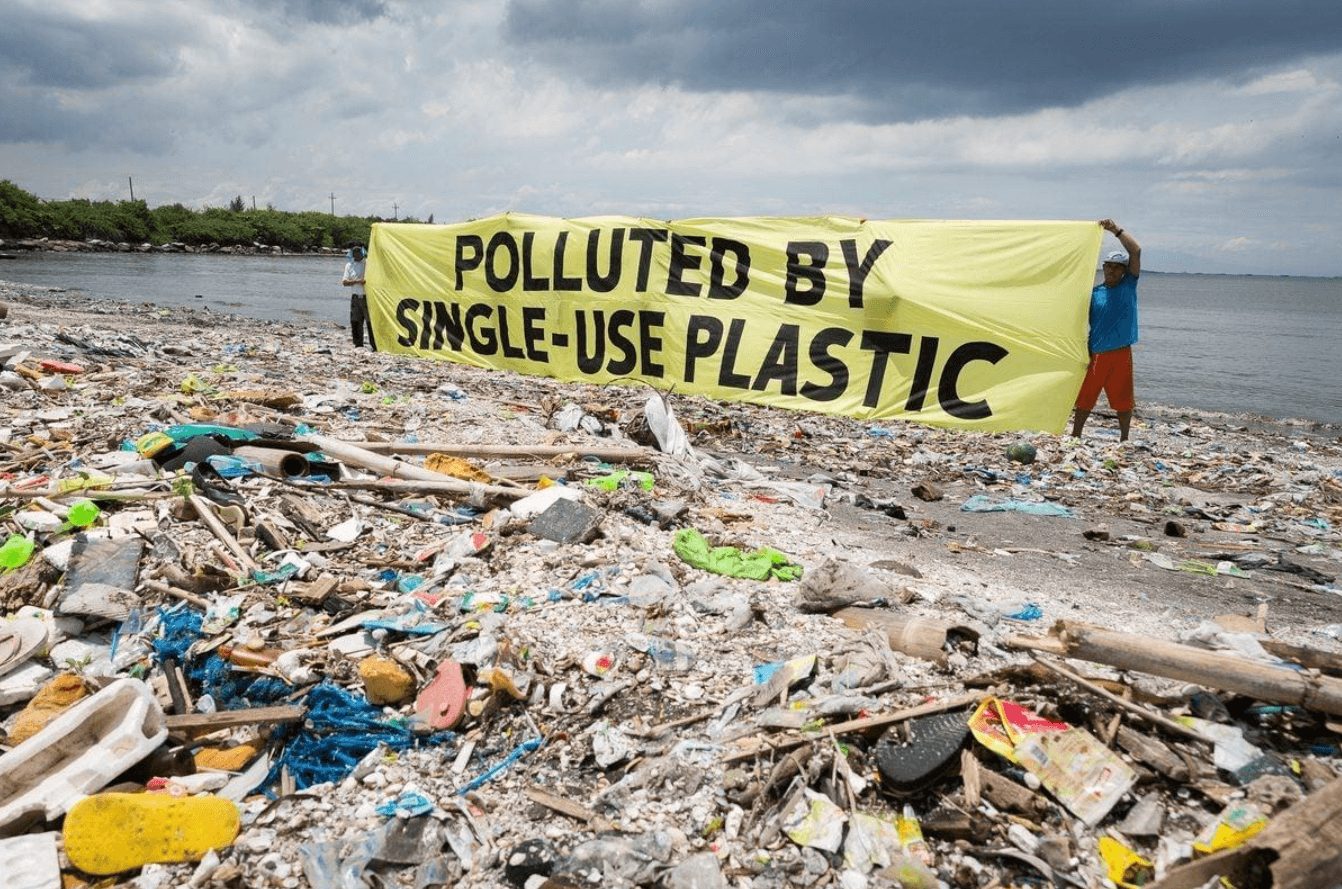
Spain’s northern coast has been fighting a months-long assault from a ‘white tide’ of plastic pellets dumped by a Dutch-registered shipping-vessel.
“The pellets themselves are a mixture of chemicals – they [come from] fossil fuels,” a spokesman for an international campaigning group, Environmental Investigation Agency, told UK’s The Guardian.
“Chemicals leaching from plastics can change the mix of microbial life in seawater and harm the microscopic life forms that are critical to oxygen production in our oceans,” Ian Williams, a professor of applied environmental science at the U.K.’s University of Southampton, said to Newsweek. The chemicals that leach into seawater from plastic waste can disrupt microbes that form an essential part of the marine food web,” he explained.

Plastic pellets found washed up on a beach in Galicia, Spain on Dec. 26, 2023. Credit: EcoWatch
‘Nurdles’, if you are not familiar with the term, is the colloquial name for tiny plastic beads used to make plastics. Composed of polyethylene, polypropylene, polystyrene, polyvinyl chloride and other plastics, nurdles are shipped around the world as raw materials, with hundreds of thousands of tons ending up in our oceans with other plastic debris. The plastic can be ingested by fish and birds.
To date, the volume of nurdles in the oceans is infinitesimally small, leading some skeptics to suggest the sudden surge in reporting on the ‘nurdle crisis’ is overblown, hyped by environmental activists who are leveraging periodic nurdle spills, such as the recent Gallic coast incident, to intensify their anti-plastics campaign. But some scientists disagree, viewing nurdles as the tip of a plastic iceberg threatening marine bio-life.
Hardly any plastic – just 9% – ever enters a recycling plant. Plastic debris has now been detected even in remote, largely uninhabited aqua regions of our planet. It’s estimated that more than 171 trillion pieces of plastic are floating in our oceans, many in entangled clumps. At current rates, this number could triple by 2040. The most notorious of these floating dumps is the Great Pacific Garbage Patch. a growing plastic patch roughly the size of Great Britain in the North Pacific Ocean between the west coast of North America and the east coast of Japan. Twice the size of Texas, the patch consists of discarded pollution from every continent.
Until recently, there have been no potential solutions on the table. That is changing, thanks to advances in genetic engineering—but will it be derailed by a labyrinthal government regulatory structure and a lingering hostility toward biotechnology among the very same activist groups that are drawing attention to the marine plastic crisis?
The scope of the global plastic waste challenge

Floating on and just below the sea surface, plastic garbage dumps now litter the global oceans. (Genetic Literacy Project)
Plastics disintegrate over time into smaller and smaller pieces that can entangle marine animals, such as seals, whales and turtles, and wreak havoc on sea birds like the short-tailed albatross, which mistakes pellets for the fish eggs that they harvest and feed to their young. The birdlings eventually die of starvation or damaged organs. Eventually, over time, these small pieces of plastic break down even further into particles called microplastics, which are less than five millimeters in length (or about the size of a sesame seed) and to still smaller particles called nano-plastics. The United Nations Environment Program (UNEP) considers these particles among the world’s top environmental challenges.

Credit: Naja Bertolt Jensen / Unsplash
Because the plastic is in such small pieces and pellets, and often meters below the ocean surface, collecting it seems a near-impossible challenge. The National Ocean and Atmospheric Administration’s Marine Debris Program has estimated that it would take 67 ships one year to clean up less than one percent of the mess.
Biotechnology solution
How might genetic engineering help? We could turn bacteria into a plastic removal army. According to The Guardian:
In 2001, a group of Japanese scientists made a startling discovery at a rubbish dump. In trenches packed with dirt and waste, they found a slimy film of bacteria that had been happily chewing through plastic bottles, toys and other bric-a-brac. As they broke down the trash, the bacteria harvested the carbon in the plastic for energy, which they used to grow, move and divide into even more plastic-hungry bacteria.
Their findings were eventually published in the journal Science in 2016, precipitating a frenzy of innovative research. Most recently, a team of scientists from the University of Edinburgh have proposed engineering a strain of the bacterium E. coli that would digest the ubiquitous polyethylene terephthalate (PET) plastics and make it possible to “upcycle” them into a high-value industrial compound.

These beads contain engineered E. coli that efficiently transform PET waste into a high-value compound.
The researchers worked with two species of bacteria. The first, Vibrio natriegens, thrives in saltwater and reproduces very quickly. The second, Ideonella sakaiensis, produces enzymes that enable it to break down and metabolize PET.
The upcycling would be accomplished via a second step–using the second E. coli strain engineered with CRISPR-Cas9 gene-editing technology to create products such as adipic acid, a material found in many useful products, including nylon, drugs and even fragrances. The process could be further enhanced by a process that would result in the conversion of 79% of plastic into a feedstock for beneficial products.
How would this process work in the real world? One promising approach would be via the production of adipic acid, one of the most important monomers in the polymer industry. It is found in beet juice, but the article of commerce — about 2.5 million tons per year — is manufactured. Until now, adipic acid has been produced in huge volumes from fossil fuels. Approximately 60% of the 2.5 billion kg of adipic acid produced each year is used for nylon; a second application would be to make polyurethane and other plastics such as PVC.
Besides the use of fossil fuels in this process, adipic acid production is associated with nitrous oxide (N2O) emissions, one of the most potent greenhouse gases, with a warming potential 300 times greater than that of CO2. It remains stable in the atmosphere for over 100 years and can play a role in depleting the ozone layer. Clearly, the status quo of discarding plastic bottles while making products such as nylon and polyurethane from petroleum products is environmentally unsustainable.
The conversion process can work in a real-world setting under ambient temperatures and in a matter of hours, making the plastic-degrading bacteria amenable to large-scale production, and thus a promising approach to reducing global plastic pollution. The French company Carbios is planning to have a commercial-scale facility up and running by 2025. It is expected to convert plastic bottle waste into other products with a capacity equivalent to 100,000 bottles per cycle.
The ecological science of ‘plastic eating’
The development of novel bacterial strains or identifying bacteria in nature that can degrade plastic has been a long time coming. The last few decades have seen small, incremental successes but nothing as significant as recent advances. For example, a few years ago scientists working at the University of Edinburgh engineered an E. coli strain that could convert the terephthalic acid in plastic bottles into vanillin, a highly valuable compound responsible for the flavor of vanilla.
The ability to produce at scale a compound as versatile as adipic acid from one of our most ubiquitous waste products would be a game-changer. The reduction in fossil fuel consumption means that using plastic products would be considered carbon neutral, or perhaps even carbon negative, because it involves the upcycling of plastic bottles waste as a reagent.
Currently, almost 500 billion plastic bottles are produced each year. The United Nations University Institute for Water, Environment and Health has reported that over 1 million water bottles are sold every minute around the world, only a small percentage of which are recycled. The reduction of plastic bottle waste and fossil fuel usage, and, therefore, of greenhouse gas production, as the result of upcycling would be hugely significant advances.
Genetically engineered plastic-degrading bacteria can also perform their magic in saltwater environments. This means that they could potentially work on ocean plastic waste.
Addressing plastic waste in our oceans and other water systems has become one of the lesser known but greatest challenges of our time. We need to find a way to reduce plastic marine pollution, or at the very least, to find a way to repurpose it for some product that is more environmentally sustainable.
Will US policymakers and environmental groups block the only viable solution to threats from metastasizing plastic waste?
Since the creation of the first organisms modified with the molecular techniques of genetic engineering in the 1970s, the U.S. Environmental Agency (EPA) has stymied innovation with its unscientific, overly-precautionary, political, and obstructionist evaluation process. If it persists, it could sideline the fast-evolving solutions designed to address the ‘plastic crisis’.
Microorganisms are regulated only if they are manufactured, imported, or processed for commercial purposes. Plastic-degrading microorganisms are currently regulated under the Toxic Substances Control Act (TSCA) if they fall under the agency’s definition of “new” -— those that are intergeneric, meaning that they are not genetically related and there has been a deliberate combination of genetic material among organisms classified in different taxonomic genera. So, for example, a completely benign microorganism with a newly inserted marker gene from another genus, would be considered “new” and, therefore, subject to onerous regulation.
The definition of regulated articles also includes any microorganism constructed with synthetic genes that are not identical to DNA that could be derived from the same genus as the recipient microorganism. Naturally occurring microorganisms are excluded (because they are implicitly listed on the TSCA Inventory) as are genetically engineered microorganisms that are not intergeneric.
As has been pointed out innumerable times over several decades by scientists and scientific organizations, the EPA’s approach conflicts with the federal government’s 1986 Coordinated Framework for the Regulation of Biotechnology, which was supposed to provide a blueprint for government regulation of the “new biotechnology,” or genetic engineering. It calls for regulation only of “unreasonable risks,” but U.S. regulatory agencies seized the opportunity for empire-building, at the expense of sound science.
It is unclear how research trials or commercial uses of plastic-degrading microorganisms would be regulated in international waters.
Not everyone is pessimistic about overcoming the regulatory obstacles to the application of genetic engineering to plastic recycling. An attorney who has worked extensively in the US policy establishment, and who was one of the principal authors of the Coordinated Framework, predicts that “any innovation with such enormous potential to both reduce plastic pollution and reduce greenhouse gas emissions would be the Holy Grail of governments, environmentalists, and industry,” and that “demand will drive acceptance of this technology” (personal communication). We hope he’s right.
Discarded plastic products are a scourge of water pollution in many regions of the globe and constitute a growing hazard to wildlife and ecosystems, and possibly to public health. The application of genetically engineered bacteria to degrade the massive accumulations of plastic while producing useful byproducts is promising, but scaling up and overcoming regulatory barriers could be problematic.
Note: An earlier version of this article was published by the Genetic Literacy Project earlier this year.
Dr. Kathleen L. Hefferon is an instructor in microbiology at Cornell University. Find Kathleen on X @KHefferon. Henry I. Miller, a physician and molecular biologist, is the Glenn Swogger Distinguished Fellow at the American Council on Science and Health. He was the founding director of the FDA’s Office of Biotechnology. Find Henry on X @henryimiller.



